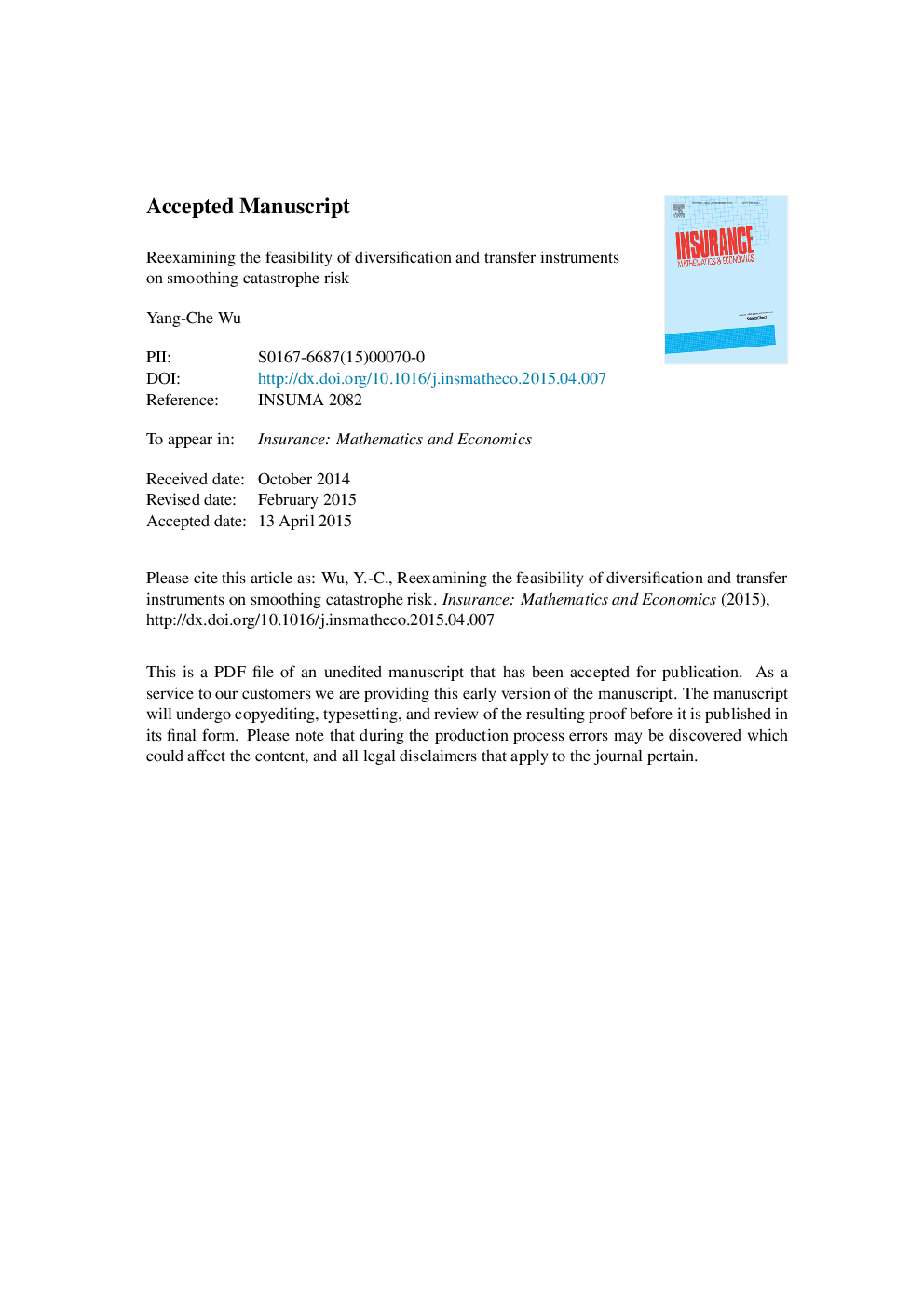| Article ID | Journal | Published Year | Pages | File Type |
|---|---|---|---|---|
| 5076383 | Insurance: Mathematics and Economics | 2015 | 41 Pages |
Abstract
The present study discusses the effects of diversification and transfer of risk by global insurers on smoothing the peak of catastrophic claims. Empirical experiments indicate that the occurrence frequency of natural catastrophes (NatCat) has a serially dependent trend and that the Cox-Ingersoll-Ross square-root model for global insured losses is best fit than any other static distributions. The results are used to develop a NatCat risk insurance model that sets up a NatCat premium formula, uses the serially dependent dynamics of insured loss and establishes the cash flow of all involved parties while considering corporate income tax and no additional risk premium. The simulation results based on this model shows that fluctuation reserves, catastrophe bonds and catastrophe funds with payback schemes are feasible options for smoothing risk because they can benefit all long-term involved parties, including insurance company shareholders, the insured, bondholders, the fund and the government (i.e. taxpayers).
Related Topics
Physical Sciences and Engineering
Mathematics
Statistics and Probability
Authors
Yang-Che Wu,
